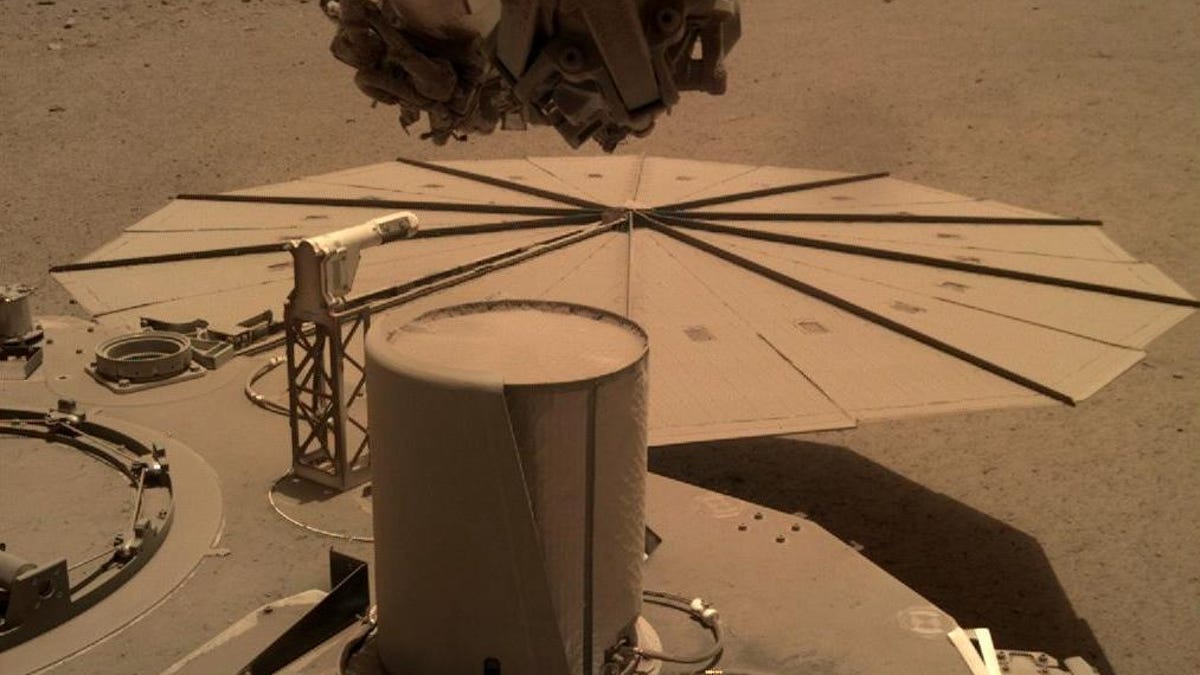NASA Mars InSight lander limits operations due to dusty solar panels
NASA is hoping a dust devil will come along to scrub InSight's solar arrays.
It's a massive month for spacecraft entering Mars orbit, but let's not forget about the machines that are already on the ground. NASA's solar-powered InSight lander, which touched down in 2018, has a bit of a dust problem to deal with.
NASA is temporarily limiting the operation of InSight's science instruments. "As dust collects on the solar panels and winter comes to Elysium Planitia, the team is following a plan to reduce science operations in order to keep the lander safe," the agency said in a statement on Friday.
The InSight team tweeted an eye-opening pair of images showing the lander's solar panels near when it first landed and what they look like now. There's a healthy layer of reddish dust coating the array.
Mars is a cold and dusty place! It’s been harder to collect solar power lately, so I’ll be conserving energy for a bit, while I soak up as much sun as I can.
— NASA InSight (@NASAInSight) February 12, 2021
Read full story: https://t.co/AL6QtH2uZZ pic.twitter.com/h3K4zgimsH
The lander's broad solar panels are designed to continue working even in the dusty conditions of Mars with the expectation that dust devils will help clean them off. "But despite InSight detecting hundreds of passing dust devils, none has been close enough to clean off those dinner-table-size panels since they unfurled on Mars in November 2018," said NASA.
The solar arrays are now down to producing 27% of their full capacity when clean. Some of that power needs to go to InSight's heaters in order to protect the lander during the Martian winter. The available power will be rationed between the heaters and various science instruments.
The InSight team expects to ramp science operations back up more fully in mid-2021 as Mars gets closer to the sun. "Currently, power levels look strong enough to take the lander through the winter," said NASA. "But solar power generation on Mars is always a little uncertain."
InSight recently received a mission extension through December 2022 that will allow it to continue gathering seismic and weather data. Now it just needs to weather the winter.
Follow CNET's 2021 Space Calendar to stay up to date with all the latest space news this year. You can even add it to your own Google Calendar.


